What's Growing in the Garden
by Zac Hoppenstedt
Johnson County Horticulture AgentContent for this gardening recap comes firsthand from observation and experience of K-State Extension agents and volunteers who oversee the WIC Community Garden, the ¼ acre urban farm space focused on fruit and vegetable production located at the Johnson County Extension office. The WIC Garden is one part trial and teaching grounds for urban agriculture and one part community resource for food access and fresh produce donation to those in need. Read more about the garden and volunteer opportunities at: https://www.johnson.k-state.edu/lawn-garden/wic-community-garden/index.html
Spring is in full swing at WIC. The fruit trees are in bloom and all of our beds are planted to spring crops, like carrots, broccoli, cabbage, onions, garlic, lettuce and more. This year we also have a newly established 60-ft no-till permanent raised bed that we laid out directly over one of our sod walkways with more than six cubic yards of compost—more to come on this project in next month’s article. In the meantime, this post will cover some of the latest activities and accomplishments at the garden.
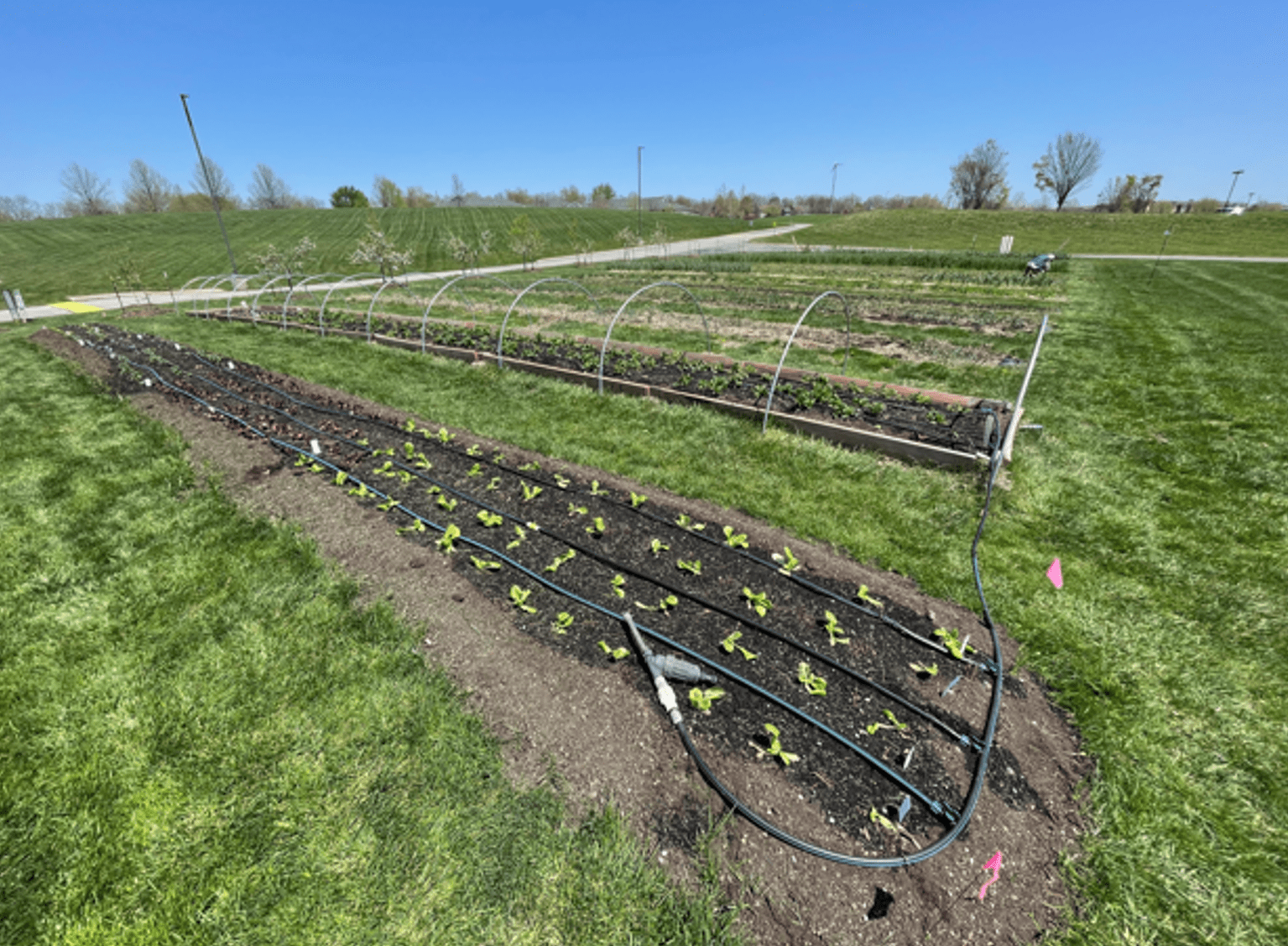
Spinach Harvest
In an effort to extend our season through the winter, last fall we constructed a 60 ft-long low tunnel over one of our raised beds. The tunnel was built almost entirely with materials available at the local hardware store. We used 10 ft galvanized electrical metal tubing (EMT) that we bent with 6 ft hoop bender (purchased online), sliding the tubing over partially buried 24” sections of rebar to anchor the hoops. Then, it was covered with greenhouse plastic that’s held in place with synthetic bailing twine zig zagging over the top.
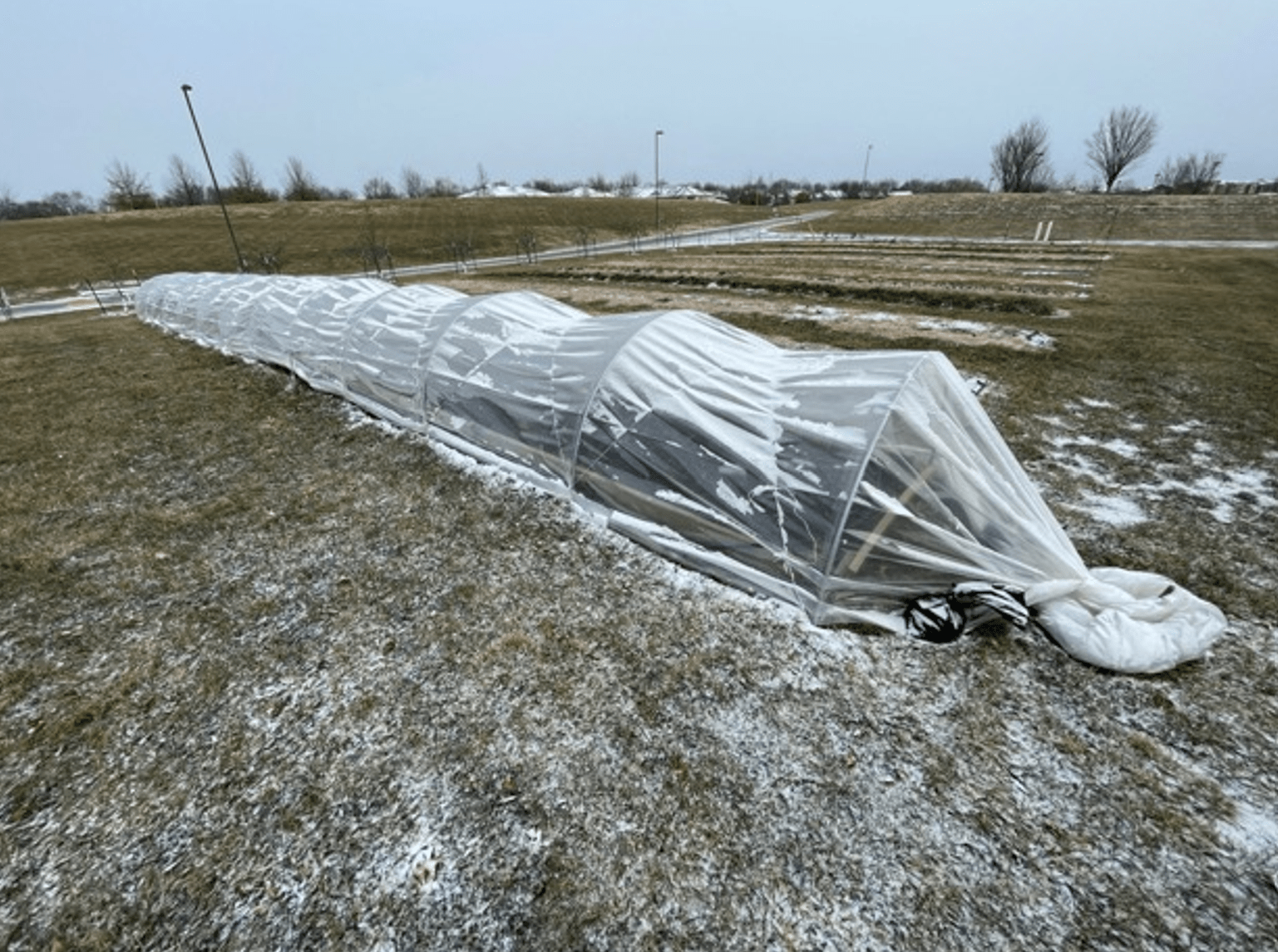
We seeded ‘Bloomsdale’ spinach in plug trays in mid-September and transplanted those seedlings about 8 weeks later. Believe it or not, we actually had a few good early harvests in December and early January before the plant growth really slowed down due to shorter days and cooler temps. Fluctuations in temperature this spring made regular venting of the plastic a sometimes daily requirement, but we had to be quick to cover again when a 70 degree day was abruptly followed by an ice storm. That’s the reality of farming in Midwest! We removed greenhouse plastic for good at the beginning of April and the last couple of weeks have been spinach bumper crops—harvesting over 20 poundsfor pantry donation the last week of April. Some plants are now starting to bolt due to the higher temperatures. We’ll pull them early this month and we already interplanted some Nantes-type carrots which are starting establish kin their place.
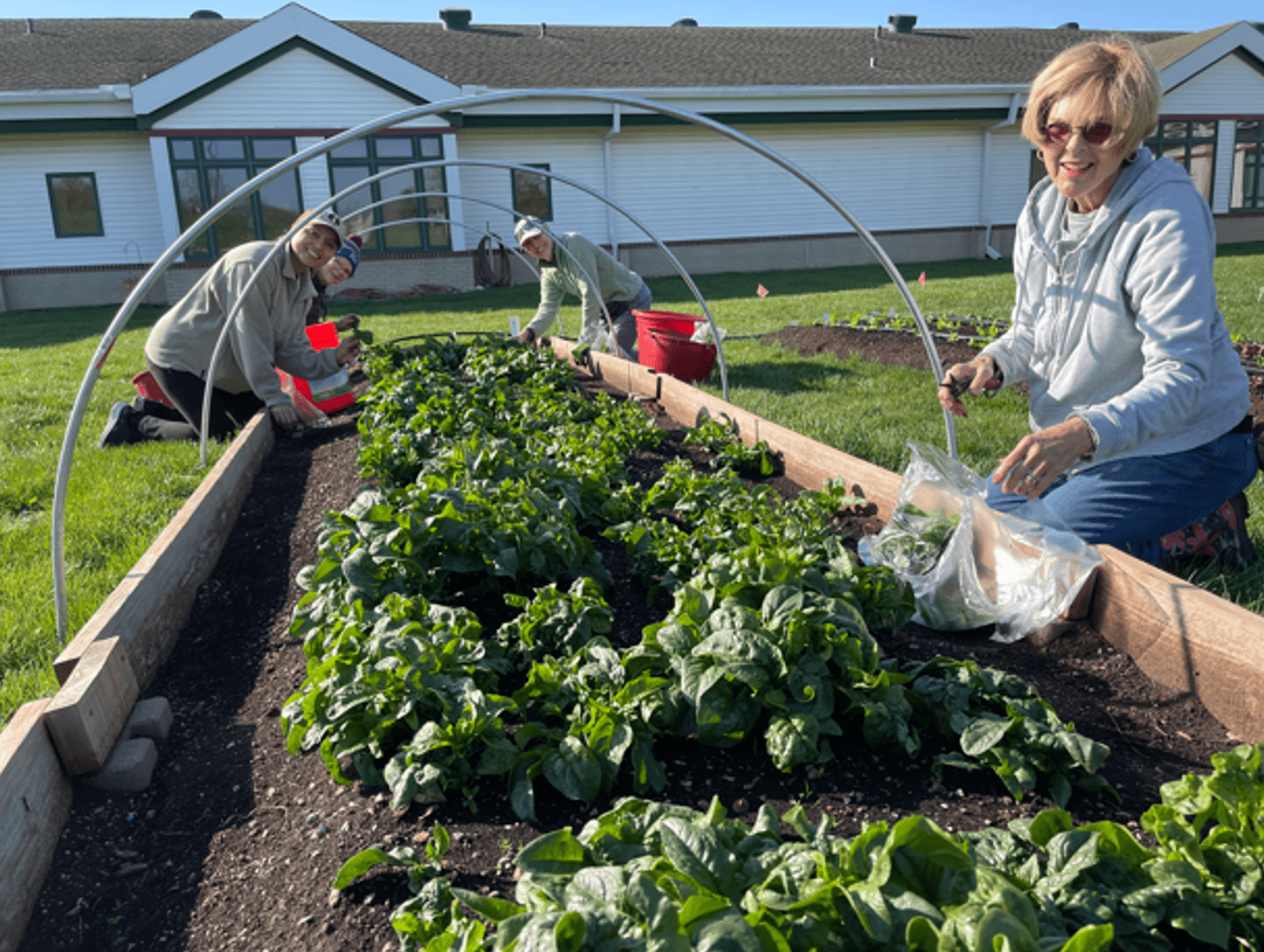
Fall planted strawberries
Strawberry plants are just starting to flower consistently and we’re hopeful we’ll have our first harvest of these WIC garden favorites later this month. We planted our first 60 ft bed of strawberries in the garden in the fall of 2020, both a June-bearing variety ‘Chandler’ and a day-neutral or everbearing ‘San Andreas.’ They were a hit! Our neighbors at the Health Department really enjoyed being able to take their clients out to the garden and harvest these sweet berries fresh, so in 2021 we planted a second row with ‘Ruby June’ another June-bearing cultivar.
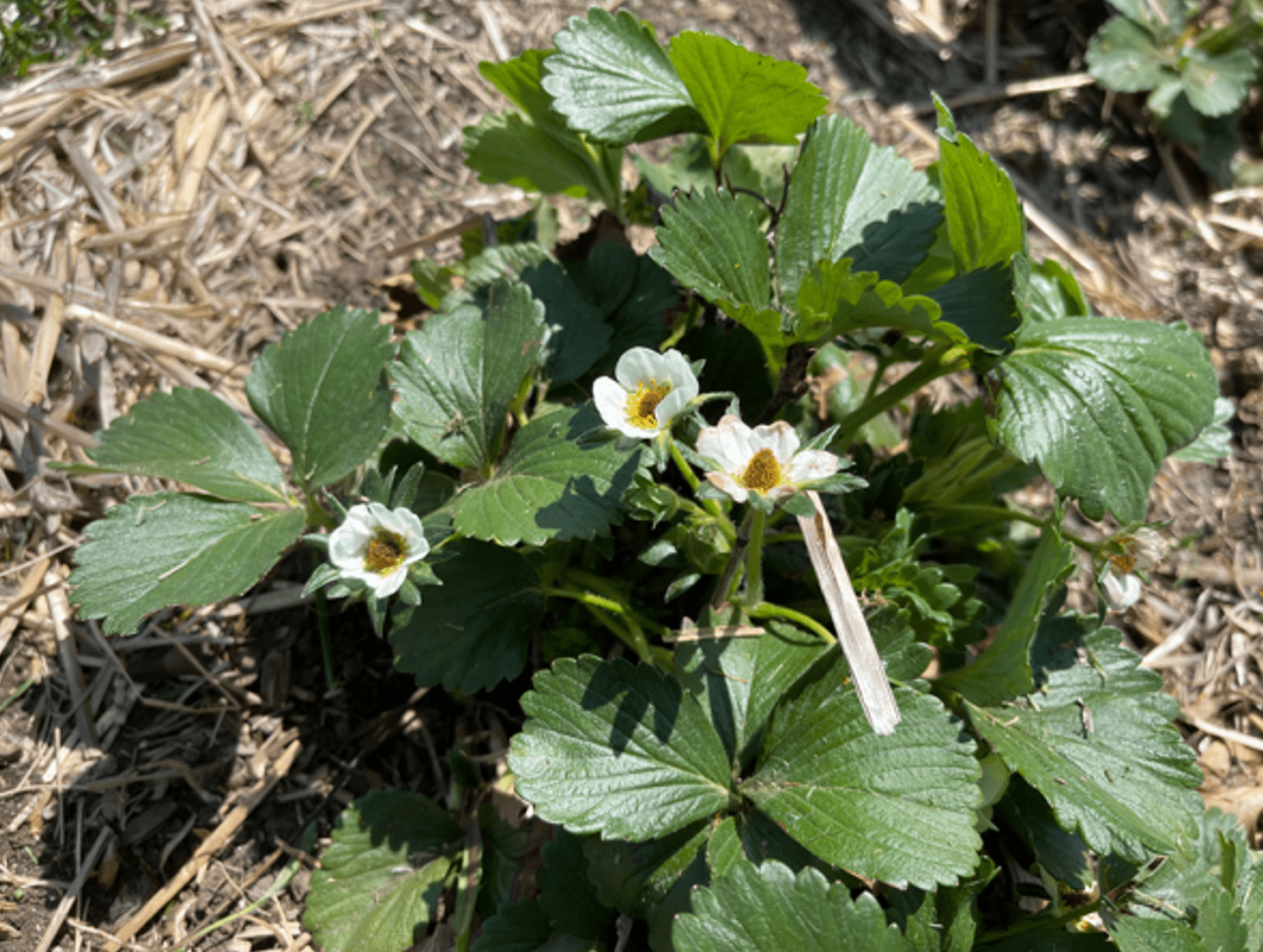
Most home gardeners will plant strawberries they buy in spring with the recommendation to remove blossoms the first year and wait until the second year for fruiting. At WIC, we’ve adopted a common practice for local farms which is to order plug plants from nurseries online that ship out in the late summer. This offers us a shorter window from planting to harvest. Late summer/early fall planting gives the plants enough time to establish before winter and support flowering fruiting the following spring. For more information on varieties and recommended management check out our Strawberries Publication.
Spray schedule for fruit trees
The WIC community garden features a small orchard with approximately 20 fruit trees, mainly apple planted on dwarfing rootstock, European and Asian pear and a couple newly planted peach trees that are still a year out from production. The most mature apple and pear trees were planted in 2014thanks to partnership and support from the Giving Grove who provided a lot of the nursery stock. The garden and orchard are managed organically and we try our best to exhaust all nonchemical methods to control pest and disease. In good years, we’ve been able to harvest 20-30 lbs of fruit from productive trees but crop loss due to codling moth have been decimating if we’re not proactive with sprays.
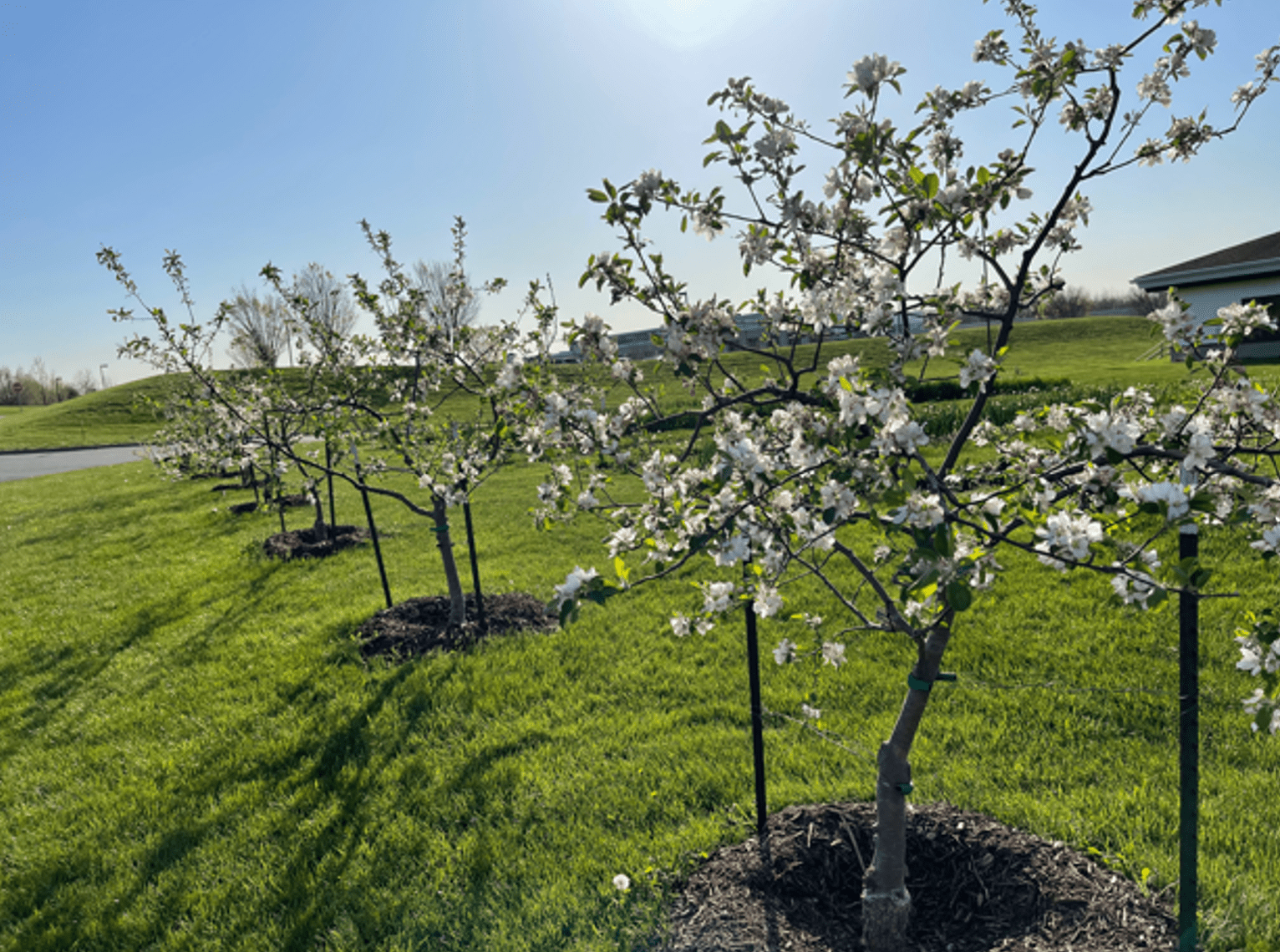
At the time of publication, the apple trees are in full bloom, while many of our European pears are at petal fall with nice clusters of set fruit. It’s important to avoid using any insecticide either organic or synthetic during bloom to avoid any threat to pollinators. Likewise we are always mindful to only make spray applications very early in the morning or late in the day when pollinators are less active. Nonetheless, the few days following petal fall is a critical time for managing insect pressures like coddling moth with targeted sprays—we often use Spinosad an organic-approved natural bacterium that is toxic to insects. Adult codling moths will be active at this time and if left unchecked their laid eggs will hatch and worms will enter the apple and be protected while feeding. Moreover, there are three generations of this moth in one growing season, so we are planning to use monitoring traps this year to time our sprays and apply only when adults are active. Review K-State’s Fruit Pest Control publication and Spray Guide for more information on managing tree fruit pests.
That’s just a taste of all of the action that’s been happening in the garden over the last several weeks and months. Stay tuned for more as we look ahead to the start of the summer season, including our first pop-up farmers market at the garden in June!